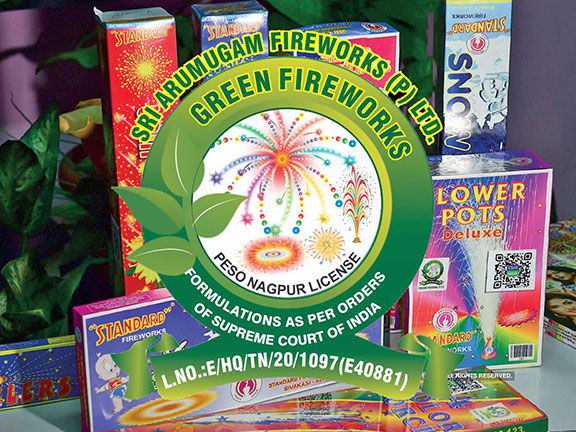Green crackers for this Diwali
10:21 PM, Friday, November 13th, 2020 Mangaluru : In the past few years, air quality and pollution, aggravated by stubble burning, during November- December has become a cause of concern in the National Capital Region (NCR). The National Green Tribunal (NGT) has ordered a ban on the sale and use of crackers in the region until November 30.
Mangaluru : In the past few years, air quality and pollution, aggravated by stubble burning, during November- December has become a cause of concern in the National Capital Region (NCR). The National Green Tribunal (NGT) has ordered a ban on the sale and use of crackers in the region until November 30.
Many state governments this year including Rajasthan and Odisha have banned bursting firecrackers, keeping in mind environmental impact as well as Covid-19 pandemic, while those like Karnataka and Andhra Pradesh have allowed green firecrackers.
Developed by the Council for Scientific and Industrial Research (CSIR), green crackers emit pollutants at a 30% lesser rate than their conventional counterparts.
Here’s all you need to know about green crackers:
1. Green crackers are made using less polluting raw materials. Their chemical formulation ensures reduced particle emission into the atmosphere by suppressing the dust produced.
2. While regular crackers emit about 160 decibels of sound, green crackers’ emission rate is limited to 110-125 decibels
3. Manufacturers need to sign a deal with the CSIR in order to make fireworks using the green cracker formulation.
4. There are three types of green crackers available in India – SWAS, STAR and SAFAL.
5. Green crackers too, in many cases, use polluting chemicals like aluminium, barium, potassium nitrate and carbon, But the quantity is reduced which in turn lowers the emission by about 30 per cent. In some green crackers, these chemicals are not at all used.
Simillar Posts
Warning: count(): Parameter must be an array or an object that implements Countable in /home/megamcaq/public_html/wp-content/plugins/post-plugin-library/common_functions.php on line 357
- None Found
Leave a Reply
© Copyright 2008 www.megamedianews.com All Rights Reserved. Privacy Policy








 Posted in
Posted in  Tags:
Tags: 






